The ratio of charge on left surface of plate A to the charge on the right surface of plate B is +Q +3Q -20 (A) (B) (C)
Step by step video & image solution for The ratio of charge on left surface of plate A to the charge on the right surface of plate B is +Q +3Q -20 (A) (B) (C) by Physics experts to help you in doubts & scoring excellent marks in Class 11 exams.
Similar Questions
Some isolated metal plates with large surface areas are kept parallel to each other and total charges on each plate are as shown. Find the charge appearing on the surfaces of plates.
(a)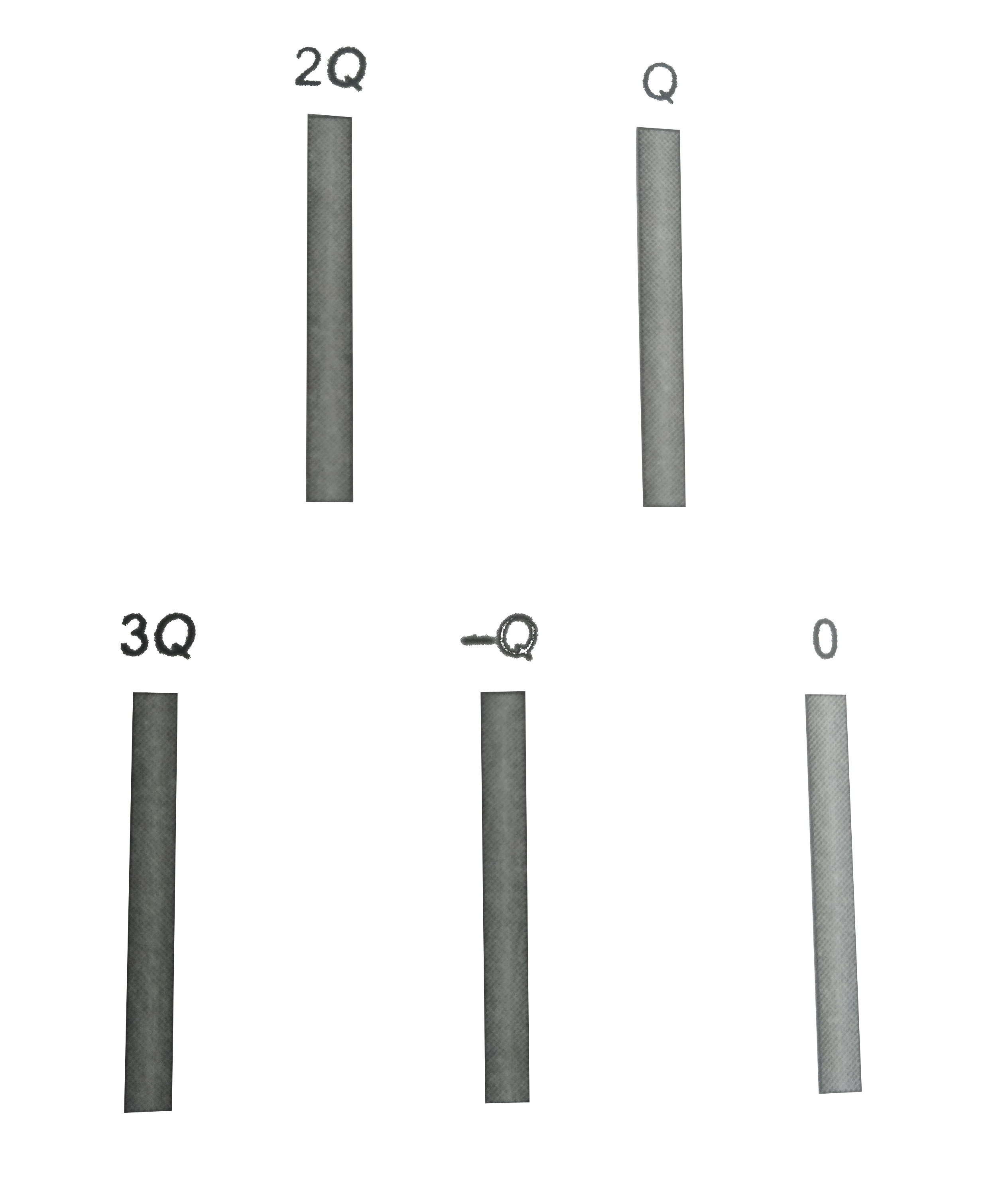 View Solution
View SolutionIn the figure shown below ,the charge on the left plate of the 10μF capacitor is −30μC.The charge on the right plate of the 6μ,F capactior is :
 View Solution
View Solution
Knowledge Check
- Question 1 - Select One
Three metallic isolated plates are given charges as shown in figure, the sum of the charges on the outer surfaces of the two plates (1) and (3) is (where −3Q and 4Q are total charges of plates (1) and (3) respectively.)
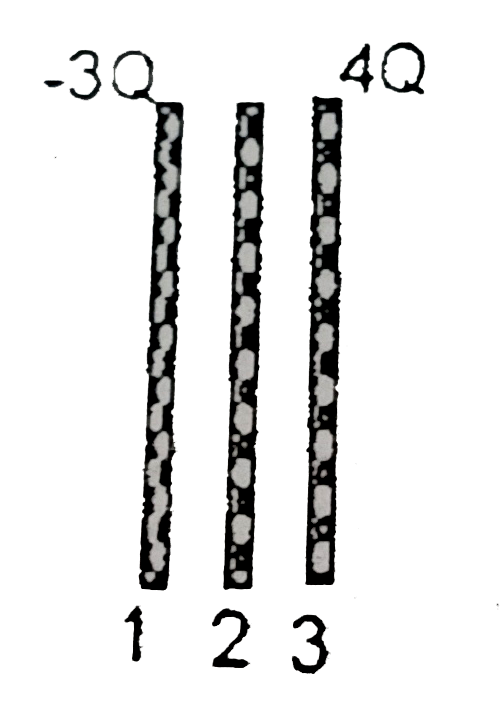 AzeroBQ/2C−Q/2D−2Q
AzeroBQ/2C−Q/2D−2Q - Question 2 - Select One
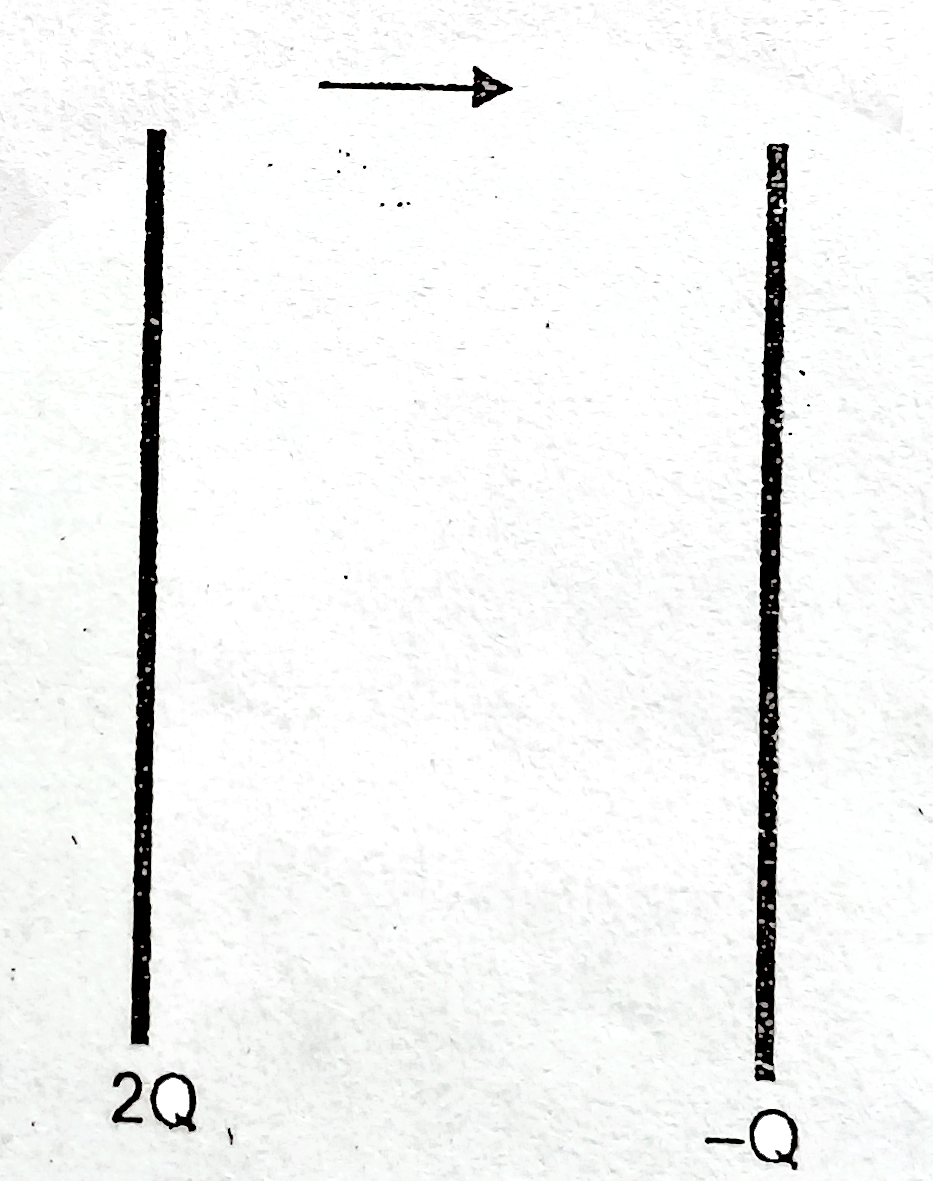
Two large parallel conducting plates of net charge 2Q and −Q are placed in a uniform external electric field Q2Aε0 prependicular to plates as shown. The surface area of each plates is A. The charge on the left surface of the left plate and right surface of the right plate are respectively.AQ/2 ad −3Q/2BQ an 0C0 and QDQ/2 and Q/2 - Question 3 - Select One
Four large metallic plates of area A each are kept parallel to each other with a small separation between them as shown in the figure. A cell of emf V is connected across the two outermost plates through a switch K1. The two inner plates are similarly connected with a cell of emf 2 V through a switch k2 Initially both switched are open and the plates, starting form left to right (i.e. number 1 to 4) are given charges Q,2Q,−2Q and −Q respectively. Now answer the following questions

If K1 is closed and K2 is open the charge appearing on the right surface of plate-2 isAQ2+(ε0Ad)V4B(ε0Ad)V4+3Q2C(ε0Ad)V4−Q2D3Q2
Three identical metal square plates of surface area A of each side is arranged as shown in the figure.Plates 1 2 and 3 are given charges +20, -Q and -Q respectively. Find out the correct options A) Charge on the two faces of the middle plate are -2Q and Q B) Charge on the two faces of the middle plate are -Q and 0 C) Charge on the two faces of the left most plate are zero and 2Q D) Charge on the two faces of the right most plate are -Q and zero
View SolutionThree charged conducting plates are separated by small distances as shown in figure. The charges on the plates are shown. Find the ratio of charge on right surface and left surface of the middle plate.
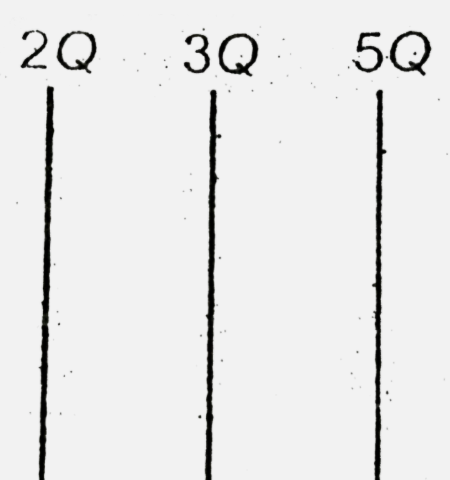 View Solution
View SolutionThree large plates A, B and C are placed parallel to each other and charges are given as shown. The charge that appears on the left surface of plate B is
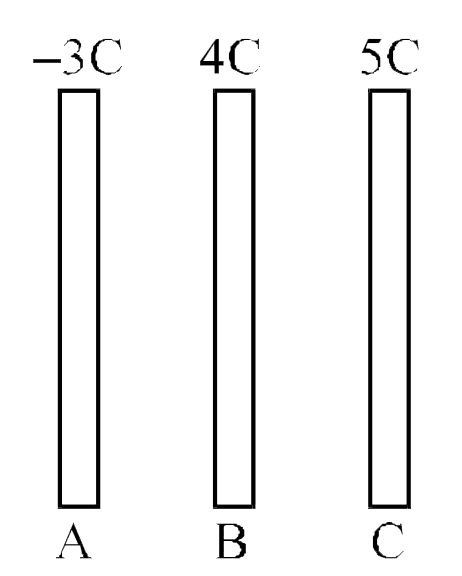 View Solution
View SolutionA parallel plate capacitor has capacitance C. If the charges of the plates are Q and −3Q, find of the
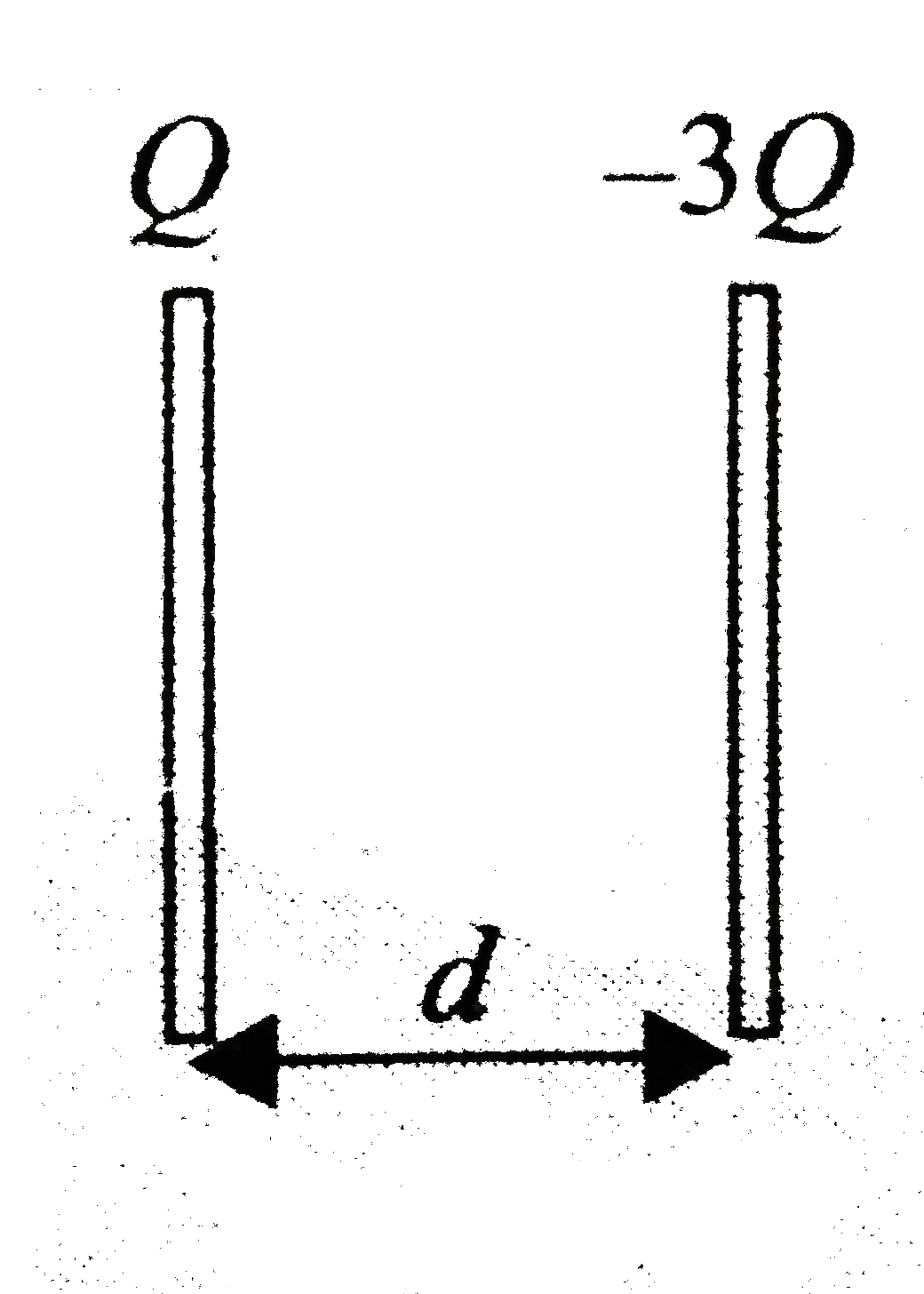
i. charges at the inner surfaces of the plates
ii. Potential difference between the plates
iii. charge flown if the plates are connected
iv. energy lost by the capacitor in (iii.)
v. charge flown if any plate is earthed.View SolutionA dielectric slab is inserted between the plates of a capacitor. The charge on the capacitor is Q and the magnitude of the induced charge on each surface of the dielectric is Q'.
View Solution
